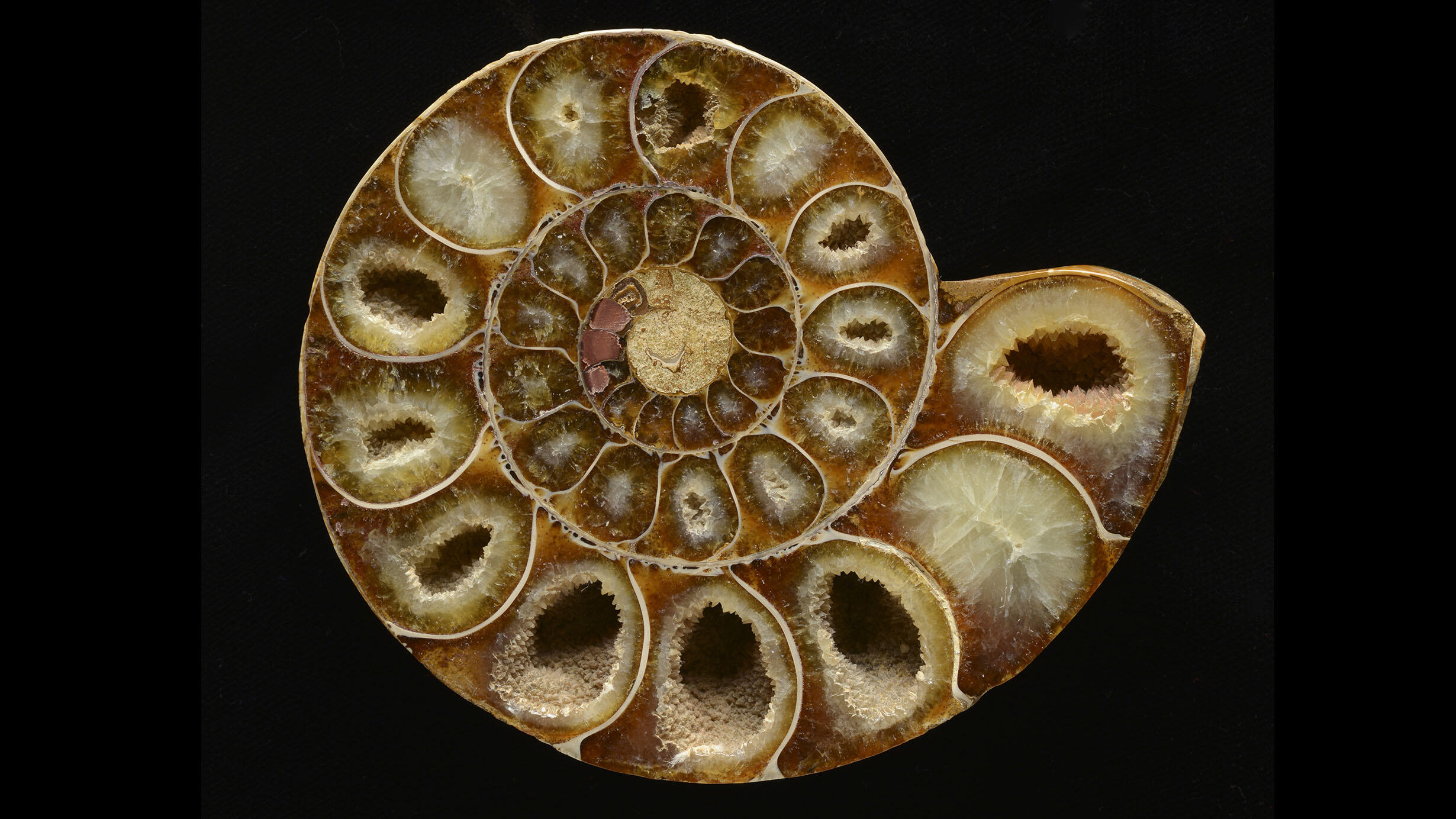 This specimen is one of an estimated 500,000 ammonites in the Museum’s collection, the third largest in the world. Approximately 300 come from Madagascar, including some from the Jurassic Period.
This specimen is one of an estimated 500,000 ammonites in the Museum’s collection, the third largest in the world. Approximately 300 come from Madagascar, including some from the Jurassic Period.C. Chesek/©AMNH
At first glance the steely gray shells of ancient Malagasy ammonites might look like nondescript stones. But look more closely—and inquire a little more deeply—and you’ll find, to quote the poet Walt Whitman, these fossils “encompass worlds.”
The specimen pictured above is Puzosia saint-oursi, a species found in the Mahajanga Province of Madagascar that dates from the Early Cretaceous, around 100.5–113 million years ago. It offers a unique window into what ocean life was like during the specific period in which it lived, as well as possible clues to how these abundant marine animals went extinct. They perished along with 75 percent of all animals on Earth, after a giant asteroid crashed into what is now Yucatán some 66 million years ago, creating ash fallout that increased the acidity of the world’s oceans.
C. Chesek/©AMNH
“Scientists refer to the Cretaceous Period as ‘greenhouse Earth’ because of parallels in climatic conditions then—higher temperatures, warming seas, carbon levels in the atmosphere—and where we are headed based on the evidence for global climate change,” says Neil Landman, curator in the Division of Paleontology. And ammonites, he says, “are the organisms that can tell us about the Cretaceous world.”
C. Chesek/©AMNH
Using scanning electron microscopes, researchers can clearly see the inner structures of the shells and, with chemical tests of a small chip, analyze them for oxygen and carbon isotopes. The ratio of each type of isotope points to the acidity of the water in which the animals lived, as well as at which depth, and how they handled changes in the water’s temperature. “They retain their whole life history in their shell,” says Landman.
Landman and his team are working to understand why ammonites became extinct while their less diverse and less populous cousins, the nautilids, survived. Unlocking this puzzle may provide information about how marine life today might cope—or fail to cope—with the increasingly altered conditions of today’s oceans.
A version of this story appeared in the Spring issue of Rotunda, the Member Magazine.